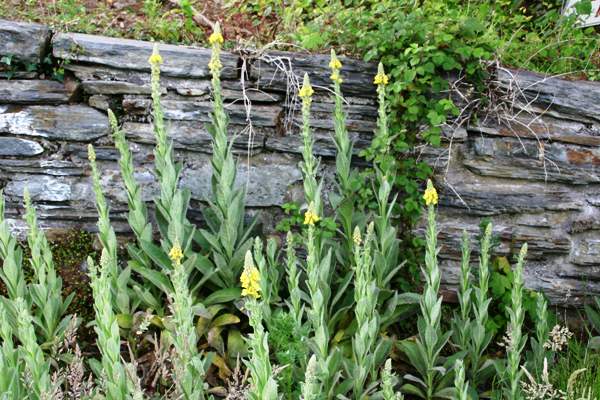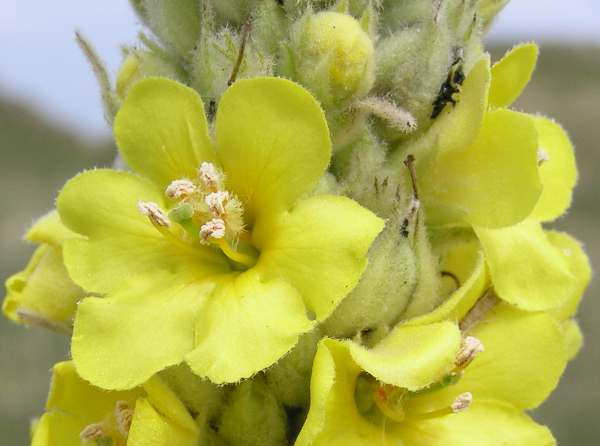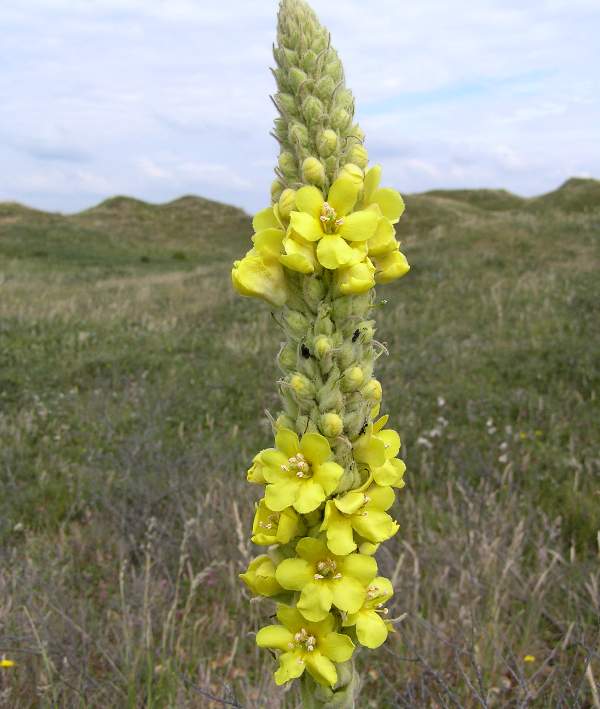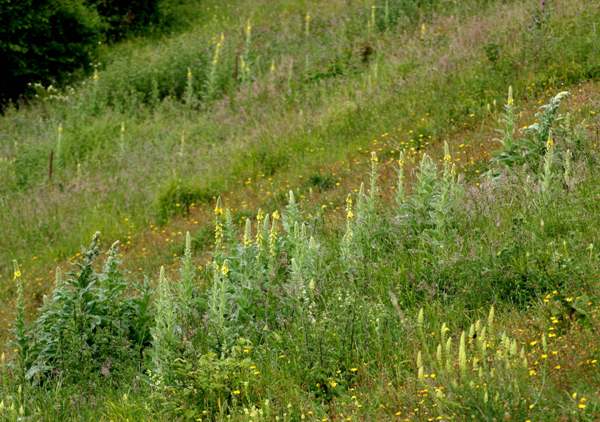Verbascum thapsus - Great Mullein
Phylum: Magnoliophyta - Class: Equisetopsida - Order: Lamiales - Family: Scrophulariaceae

There are several Mullein species, but Great Mullein truly deserves its common name because it can grow to a height of two metres, although little more than half that height is more usual.
Description
The leaves of the Great Mullein are hairy, giving this plant a downy white appearance. The individual yellow flowers are typically 25mm across but, unlike foxgloves, the lower flowers do not necessarily open first.

Distribution
Great Mullein is common and widespread throughout Britain and Ireland except for the far north. This wildflower is also found in most parts of mainland Europe including the Mediterranean region, where it thrives despite the long dry summers, and in northern Africa and parts of Asia.
In North America, South America and Australia Verbascum thapsus is an introduced alien species.
Habitat
Great Mullein is a plant of dry, sunny places including coastal sand dunes.
Blooming Times
These striking flowers, which in Britain and Ireland can be seen in bloom from June through to August, are usually at their best in July.

Uses
Great Mullein has long been used in herbal medicine, where its emollient quality (as a skin moisturiser) and its astringent properties have been exploited. Many other benefits have been claimed for this plant including anti-inflammatory, anti-tumour, antifungal and antibacterial effects. Its analgesic properties are also widely reported, and there have been cough mixtures based on mulleins. Other past uses for this plant have included the dyeing of fabrics.

Etymology
Verbascum, the genus name, is a corruption of the Latin adjective barbascum, which means 'with a beard.' This is a reference to the hairy surfaces of the leaves, stems and bracts of this mullein. (In some field guides this species is referred to as Common Mullein.)
The specific epithet thapsus means 'from Thapsus', an ancient (now ruined) village near Carthage, in Sicily, and so as you might expect this wildflower is indeed very common on Sicily.
Similar Species
Wavyleaf Mullein Verbascum sinuatum is a southern European species with (as its common name declares) wavy-edged leaves.
The pictures shown on this page were taken in North Wales in July.
Sue Parker's latest ebook is a revised and enlarged second edition of the acclaimed Wildflowers in the Algarve - an introductory guide. Full details here...
Buy it for just £3.95 on Amazon...
Please Help Us: If you have found this information interesting and useful, please consider helping to keep First Nature online by making a small donation towards the web hosting and internet costs.
Any donations over and above the essential running costs will help support the conservation work of Plantlife, the Rivers Trust and charitable botanic gardens - as do author royalties and publisher proceeds from books by Pat and Sue.



